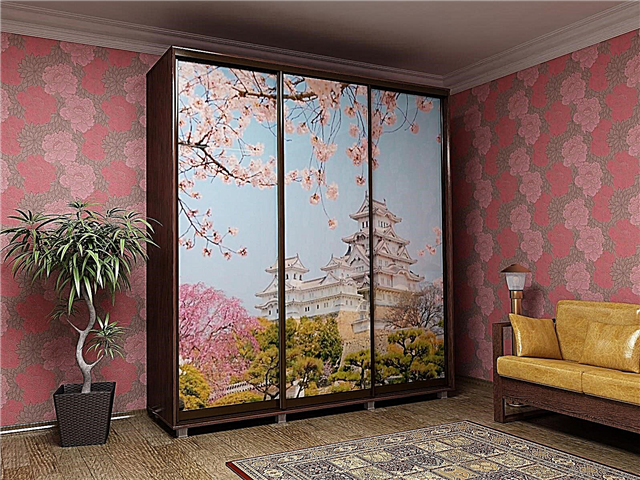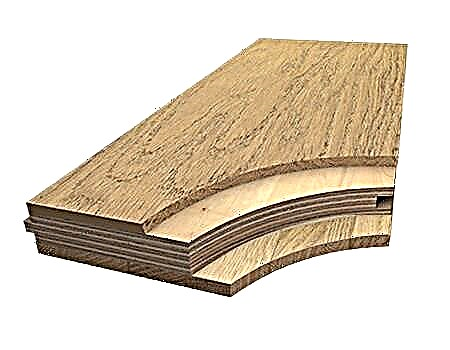The GOST standard strictly defines the dimensions that the door frame must comply with. Dimensions may vary depending on the functional purpose of the room for which the interior door is selected.
- The width of the standard box of the interior door for living rooms is 80 cm. The standard thickness of the doorway into which the box is inserted is from 7 to 20 cm (depending on the type of material the house is built from).
- The width of the door frame of the interior door for the bathroom is 60 cm. The standard height of the doorway is from 190 to 200 cm.
- The standard width of the modern interior door for the kitchen is 70 cm, and the thickness of the doorway in this case is 7 cm. The height of the opening into which the door frame is inserted is also standard and it is 200 cm.
This standard is universal. These sizes are taken into account by designers when choosing door structures of various types, including if an interior door is planned not of an oar, but of a sliding type.
Hidden frame door structures
Constructed door structures over standard products have their advantages. But their cost is correspondingly higher. At the same time, the dimensions of the opening in the wall or interior partition must fully meet the requirements of manufacturers of door structures:
- The vertical wall is absolutely flat (tolerance - 1mm / m height),
- The maximum wall thickness is 80 mm,
- The optimum mounting clearance is 17-20 mm (+/- 10 mm).
For some models of interior doors with a hidden duct, deviations are not provided at all. The ideal clearance under the door leaf is 4 mm.
Standard box and door leaf
The width of the door frame of the interior door should correspond in size to the opening, taking into account the above-mentioned clearances (without which it would not be possible to normally set them by level).
It should also completely cover the entire side wall in the opening. As noted earlier, if the box itself is too narrow, then it is necessary to use expansion strips (or extensions). Their standard width is 150 millimeters, the length corresponds to 2 meters. Thus, for two doors you will need to buy 5 trims.
If the height of the opening is higher than the standard allows, then you can solve the problem with the help of several sheets of extruded (solid foam). They fill the free space, and paste gypsum board on top or simply plaster it (necessarily with a reinforcing fiberglass mesh)
It’s important to make such an adjustment right before the draft work is completed.
Entrance Door Requirements
The reliability of the entrance door depends entirely on the design of the canvas, on materials used during the manufacture of materials and on compliance with the technological process. If during the production even the smallest detail is missed, then in the future this will affect the entire structure, including its reliability.
The constituent elements of each design are:
The size of the door leaf along with the box depends on what material will be used in the production. If it is, for example, armored doors, then the thickness of the sheet will be at least 50-60 mm. For the manufacture of such products often require the use of at least two sheets of steel. Structural rigidity is added by ribs, which are located on the inside, basically 4 to 6 pieces are installed. The design will be more reliable if the ribs are located not only vertically, but also horizontally.
The inner void is filled with insulation and sound-absorbing material. The size of the door will also depend on the type of material used.
Standard sizes of interior doors: main types and assortment
The modern market is filled with a variety of products. You can pick up quite budget models or elite exclusive designs in different colors and designs. When choosing, you should take into account the basic design of the room.
The main materials for the manufacture of products:
| Photo | Material |
| Glass | |
| Tree | |
| Particleboard, fiberboard or MDF | |
| PVC |
Harmonious combination of models
Classification of models by opening method
Manufacturers offer samples with a hidden box. To install such structures, certain requirements must be observed:
- wall thickness should not exceed 80 mm,
- the opening parameters must comply with the manufacturer's recommendations, the vertical deviation is not more than 1 millimeter.
You can choose designs with a non-standard way of opening. They save space, in addition, an attractive appearance will be a bright accent in the design.
Swing models with the classic way of opening can be left- and right-handed, while the hinges are mounted on the opposite side.
Left and right models
Sliding - significantly save space. They have one or two canvases moving along the floor surface along special guides.
4-way sliding models
Accordion - several canvases fold in the form of an accordion; wide openings are needed for their installation.
To open the sash does not need a lot of area
Swinging are made of 1 ÷ 2 canvases, the mechanism allows you to open the canvases both inside and outside the room.
Single leaf Double leaf
Width
The most running width of a single-leaf door is 60, 70, 80 cm. Blades 40, 55, 90 cm wide are less popular. However, such dimensions also comply with the standard and are sometimes in demand.
For sliding systems according to domestic standard, there are minimum as well as maximum restrictions. The width of the canvas varies in the range from 60 to 120 cm.
For each standard door, the opening width is calculated taking into account the thickness of the frame. Additionally, the gaps necessary for the free opening of the sash, as well as the correct installation of the door frame, are taken into account. For example, if a canvas of 80 cm is selected, then the width of the passage will be 88.6 cm.
Height
A common domestic standard for leaf height is 2 m. Less often, doors are 1.9 m and 1.8 m high, they are less in demand.
The calculation of the height of the doorway similarly takes into account the gaps. However, they also provide for a threshold. For example, for a two-meter sash with a frame thickness of 3 cm, the opening height should be 278 cm. If there is no threshold, one thickness is removed - 3 cm. The indicator decreases to 248 cm.
The standard height is 2 m. Sometimes the manufacturer increases the parameter to 2.5 m. When calculating the height of the opening for a sliding door, a technological gap between the ends of the sheet and the upper and lower edges of the doorway are likewise provided. Additionally take into account the thickness of the elements of the sliding system, performing the role of the frame.
Sliding door opening dimensions
Thickness
Most of all standard boxes are produced with a thickness of 7.5 cm. The value is due to the parameters of the interior partitions. If the door frame is installed in a thick wall, extras are additionally used. It is more difficult to solve the problem with a thin partition. So that the box does not protrude from the wall, the frame will have to be cut or a part removed with a planer.
The thickness of the passage is measured at a minimum of three points. If the wall goes obliquely and is thicker than the box, additional use is made. The bar is cut with a wedge. Platbands on all sides should be pressed tightly against the wall, regardless of flaws.
Dimensions of openings in the wall
Knowing the standard sizes of interior doors manufactured by manufacturers along with the box, you can easily calculate the necessary parameters of the doorway for the construction of walls and interior partitions in the house.
To get the width of the wall opening, it is necessary to fold the width of the door leaf (for example, 800 mm), the double width of the box for the interior door (for example, 30 mm), two mounting gaps of 15 mm. In this case, the opening width is 800 + 30 * 2 + 15 * 2 = 890 mm.
The opening height is calculated similarly. It is equal to the height of the door leaf (2000 mm) + the width of the duct (30 mm) + mounting clearance (15 mm) + the gap between the door leaf and the floor base for air exchange (5 mm) = 2050 mm. If necessary, an air gap of up to 10 mm can be made. And if liquefied gas is used in a residential building, then a gap of at least 15-20 mm is made. This is necessary for good ventilation.
If interior doors are selected for ready-made openings in the walls, their parameters are calculated according to current standards. For example, if the opening has a width of 900 mm, a door leaf of 800 mm in size is suitable for it. That is, the calculations are performed on the contrary: the width of the opening in the wall (900 mm) - 2 mounting gaps (15 mm each) - 2 door frame widths (30 mm each) = 810 mm. Excess 10 mm overlap platbands.
When calculating the parameters, it is recommended to add an additional 1-2 mm gap between the blade and the box. If a rough calculation is made, then this indicator can be ignored.
Standard sizes of swing interior doors
Considering the dimensions of the internal doors with the box, you should consider the height, width and weight of the parts. First, the opening is examined, into which the box with the canvas will be inserted. Therefore, the initial characteristics are slightly increased. To adjust the basic dimensions, you can use the bars, bricks or sheets of drywall.
Sizes of a cloth
If you do not apply non-standard approaches, where the dimensions of the opening for interior doors are tied to individual wishes, then the bulk of manufacturers are based on the indicators of the standard. The ratios of the indicators of the opening and door systems (panels and ducts) based on SNiP are indicated in the table:
| № | The indicators of the cloth, cm | Characteristics of the opening, cm | |
| Width height | width | height | |
| 1 | 60*200 | 68-71 | 205-207 |
| 2 | 70*200 | 78-81 | 205-207 |
| 3 | 80*200 | 88-91 | 205-207 |
| 4 | 90*200 | 98-101 | 205-207 |
| 5 | 60*190 | 68-71 | 195-197 |
| 6 | 55*190 | 63-66 | 195-197 |
| 7 | 60+60*200 | 128-131 | 205-207 |
According to DIN standard, the ratio will be as follows:
| № | Door parameters, cm | Characteristics of the opening, cm | |
| Width height | width | height | |
| 1 | 60*200 | 70-74 | 206-208 |
| 2 | 70*200 | 80-84 | 206-208 |
| 3 | 80*200 | 90-94 | 206-208 |
| 4 | 90*200 | 100-104 | 206-208 |
| 5 | 60+60*200 | 134-140 | 206-208 |
Fig. 2. Characteristics of indoor canvas
It is worth mentioning about bivalve designs that allow you to emphasize the status of any room. Basically they consist of the same type (60 cm each) or various canvases (60 and 80 cm wide). Of the narrowed options, manufacturers offer designs with sash widths of 40 and 80 or 40 and 40 centimeters.
In terms of height, manufacturers offer products of 190 and 200 cm, but there are also European standards - 210 cm. On request, customers can purchase products of greater height (up to the ceiling or 2.3 m). Often, designers adhere to foreign standards.
Fig. 3. The main characteristics of the doors
Box sizes
Ready-made options are on sale (with a box and accessories). This is a U-shaped design, which is placed around the perimeter of the opening. The system allows you to securely fix the panel.
Based on the characteristics of the panel, for interior structures, indicators of the standard dimensions of the door frame of the interior door may vary. Therefore, it is desirable to purchase designs along with casing, frame and fittings.
For the manufacture of boxes used bars of various parameters. The width of the material can reach 1.5-4.0 cm, but the optimal figure is 3.0-3.5 cm. If you comply with the standards, you get a reliable design that lasts a long time.
Fig. 4. Dimensions of door frames
The thickness of the box and the wall should match, but this indicator should not exceed the width of the opening. For wooden walls, the criterion is 10 cm, and for brick - 7.5 cm. Therefore, a box whose dimensions exceed the wall parameters cannot be firmly fixed. Otherwise, you can use special add-ons.
When manually assembling the box, the parameters of the vertical posts must be determined in accordance with the height of the panel, the thickness of the horizontal bar, the dimensions of the gap and threshold. The parameters of the horizontal bar are calculated according to the width of the door.
The thicker the canvas, the better?
Thick canvases well emphasize the design of the living room, made in the Baroque, Renaissance or Empire style, and movable partitions and thin screens will complement the openings of wardrobes and pantries. With increasing thickness of the door, its mass increases, which increases the requirements for hinged fittings. Additional hinges may be required, which will increase the cost of construction. Therefore, the canvas should be selected for massiveness and other characteristics according to the feasibility, optimality.
There are many products on the market with leaf thicknesses of 30–40 cm. But the assortment has thinner sliding MDF partitions (about 2 cm). Tempered glass constructions from 8 mm thick have recently become popular.
Making measurements of a wall opening
When calculating what opening in the wall is needed for an interior door 80 cm wide, it is necessary to take into account the following parameters:
- Width, sash height,
- Width, box thickness,
- Decoration Details for Door Unit,
- The presence / absence of a threshold.
The opening in the wall under a wooden interior door of a standard width of 80 cm is recommended to be calculated without a threshold.
For example, you need to install a door block, the box thickness of which is 2.5 cm, and the parameters of the canvas are 200x80 cm.
Also, when performing calculations, it is necessary to take into account the building material that was used to make the door block. The thickness of the box for canvas made of solid wood will be approximately 2 cm larger.
The doorway under a standard wooden door with a width of 80 cm is calculated taking into account the presence / absence of a threshold. This nuance affects the height of the wall passage.
The height of the wall passage = the height of the sash of the door block + the thickness of the upper duct + mounting gap + threshold height (if any). That is, the dimensions of the wall opening on all sides are made at least 3 cm larger than the door block.
It is important not only to correctly calculate the size of the entrance wall opening for a standard door 80 cm wide, but also to carefully check the condition of the wall itself. Found cracks must be sealed with mortar, and the wall surface is leveled if necessary
Do not fasten doors to shaky, unstable fasteners.
Mounting Features
There are some subtleties that will be useful for both measurement and installation.
- It is recommended that measurements be taken when the floor is covered with something. The thickness of the carpet, for example, will help determine whether the level of the door’s height above the floor will change after the installation is completed.
- The sides of the opening should be parallel. To follow this, it is recommended to periodically measure the clearance at different points: in the center, bottom and top.
- You can measure the opening depth using a pair of rulers or a vernier caliper. The minimum number of points for measurement is 3. This must be done by stepping back 20 cm from the lower, upper and central parts of the opening. The basis should be taken the largest depth parameter. From it you can find out whether it is necessary to use additional parts for the box. The depth of the box should not exceed the wall depth.
- When the door frame is successfully mounted, as a rule, there are gaps between the unit and the wall. They can be eliminated with foam, and then use the platbands as a finishing touch.
If the apartment does not have hard-to-disassemble furniture, you can reduce the opening and put doors 70 cm wideTo do this, you need to build an opening from drywall, you need to build up a metal frame, but first you need to remove the old door with the box and level the slope. You can mount vertical racks for the box, fill in the free space using the GCR.
This method is practical under suitable conditions:
- The slopes are crooked, and it is difficult to establish a profile on them.
- GKL needs to be leveled on plaster, and at the same time it is not necessary to reduce wall depth.
- The passage can be reduced by no more than 10 cm.
It is necessary to eliminate the layer of plaster at the installation site, then make the necessary measurements for the frame.
Then it is necessary to arrange the profiles so that they stand in an even vertical position. The opening size should be acceptable for the installation of the box. From drywall, you need to cut several pieces and attach them to the wall using special glue and screw them to the profiles. They are connected to each other by jumpers that help maintain clearance.
If the opening is too high, this can cause a problem with the installation of the upper casing. Suitable options are to stick the wallpaper as low as possible or choose high capitals. The most effective solution is to lower the upper border of the aperture with the use of gypsum plaster and a wooden beam, and then cover it with wallpaper.
Installation of non-standard doors is slightly different.
The reason lies in the absence of boxes for these specimens, and hence the increased requirements for the quality of the arrangement of the end openings of the sides. In addition, you will have to carefully monitor the parameters of the openings.
Swing door can be hinged
Please note: when the door opens, it tilts in all directions vertically in the region of 1.5 mm.
When installing a compartment, the width of the box should be 10 cm greater than at the door.
The rotary door may shift to the sides of the opening, but the gaps should be aligned around the entire perimeter. The above samples do not have platbands that can eliminate defects
Each crevice can ruin the aesthetics of any, even the most attractive door. There are some difficulties when working with openings of pendulum and rotational specimens.
The above samples do not have platbands that can eliminate defects. Each crevice can ruin the aesthetics of any, even the most attractive door. There are some difficulties when working with openings of pendulum and rotational specimens.
If you exceed the depth of the opening by 14 cm, there will be a need for offset schemes for installing accessories for fastening. If we are talking about movable samples, then the opening thickness should be 2 times greater than the depth of the sash.
Ways to adjust the opening parameters
By standards, the opening for the interior door should be wider than the box a few centimeters on the sides and top. In the construction of private housing, builders can make doorways in accordance with accepted standards, as well as individual sizes. In multi-story residential buildings, the project provides standard sizes for doors and openings. When reconstructing old houses, quite often they are faced with a situation when the doorway does not fit the standard size. Changing the size of the finished door, if it does not fit the parameters, would be problematic, since there is a risk of spoiling the decorative design of the canvas. Ordering a product according to individual sizes is financially unprofitable. Therefore, fitting the opening is a more rational solution.
In what cases will you have to change the dimensions of the doorway to install new interior doors?
- The doorway is narrower and lower than the canvas of the product. In this case, an expansion of the opening for the interior door is required. If the wall is masonry or concrete, using a hammer drill and chipper. It is more difficult when the wall is mounted from drywall on the profiles. You will have to disassemble a part of the wall to the next profile rack. After that, install a new profile in the required sizes, and again sew up with GKL sheets.
- The doorway is larger in width and height, and you need it to meet the standards. In this case, the opening for the interior door acquires the necessary dimensions as a result of narrowing. If the size difference between the opening and the door leaf is large, then, as a rule, additional brickwork is done for the walls of brick and concrete, respectively, for gypsum cardboard, the profile and sheets of gypsum plaster are used. With a slight discrepancy, you can use sheets of drywall planted on glue.
The question is much simpler if the opening for the interior door does not match the parameters of the box in depth. In this case, an additional board of the desired width is used.
Tips for choosing an entrance metal door
The main task of the metal door is to prevent intruders from entering the house, so it must not only be reliable, but also combine style and beauty.
When choosing a design, it is worth paying attention to two important parameters: quality of construction and dimensions. But even if you rely on these two characteristics, you may encounter a problem
Even the standard sizes of entrance metal doors with a box cannot guarantee 100% reliability of the design, because there are no standards for all models. This type of design is not subject to mandatory certification, which as a result may lead to the acquisition of low-quality products with a short service life.
For example, metal doors to an office or for retail outlets may differ from standard sizes, and according to GOST, entrance doors are mainly installed in residential premises, but in other cases, they are ordered according to individual parameters of the customer.
As for the manufacturer, the domestic manufactures products according to GOST, focusing on a simple layman, but as for import options, here the sizes may vary. If in height they still correspond to domestic ones, then the width can vary significantly and when choosing a door, this point should be taken into account.
Key parameters of the door block
Most of the manufacturers in the serial production of doors, frames, platbands are guided by the standards adopted in this country. They are reflected in GOSTs (GOST 6629-88) and building codes and regulations (SNiP). The standard is suitable for houses that are built based on these standards. But they are more likely a general recommendatory nature.
Door frame drawing and sketch
The problem of non-standard openings often arises in the reconstruction of old houses, especially with high ceilings, for example, in “stalinkas”. It will be necessary either to adjust the opening to standards, or also to order doors individually.
Dimensions of doors according to GOST
In the manufacture of the doorway, the width can be selected in standard sizes or larger / smaller, taking into account the purpose of the room and the desire of its owner. For houses and apartments, it is recommended to do indoor openings less than for entering the dwelling.
The standard size for the width of the entrance door leaf is selected more than 800 millimeters. Interior doors have a width: 600, 700, 800 millimeters.

Sometimes owners specifically expand the opening to 900 millimeters.
Tip: When designing and installing the passage in the room, it should be borne in mind that large furniture is very difficult to bring into the passage with a width of 600 millimeters. The optimal value is 800 millimeters. The same sizes should be chosen for the bathroom, which will allow you to easily enter the washing machine and other large equipment.
Standard dimensions are given in the table:
| Door height cm | Opening height, cm | Web Width, cm | Opening width, cm |
| 190 | 194 — 203 | 60 | 67 — 70 |
| 200 | 204 — 211 | 90 60 | 97 – 100 67 — 70 |
| Double doors | |||
| Of two paintings of the same width. | 60 | 67 — 70 | |
| From paintings of different widths | One 60, the second 40/80 | 107 – 110 147 — 150 | |
The table shows that the canvas is selected at least 7 cm less than the doorway. But, this should take into account the thickness of the door frame.
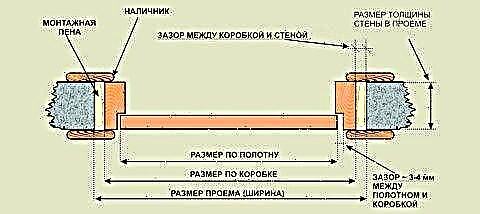
So, for example, if the thickness is 30 millimeters, which corresponds to the minimum size of a laminated simple door, it is enough to increase the width of the opening by only 6 centimeters. But for veneered or telescopic boxes this will not be enough. They have a large thickness, plus an additional gap for blowing foam.
Opening measurement

For those who like to do everything with their own hands and reduce the cost of work, a short instruction is offered that helps to correctly and quickly perform measurements of the doorway:
- Measurement should be carried out on bare walls.. To do this, remove the door leaf and box before starting work.
- The distance between the walls is measured in several places: top, bottom and center. The smallest value is recorded.
Tip: If you could not dismantle the elements, you must measure the first or size from the center of one of the platbands to the middle of the other. This will give approximate figures for the size of the opening.

- Measures the distance from the lowest point of the floor to the top of the opening or the gap between the floor and the center of the clypeus is calculated if the box could not be removed.
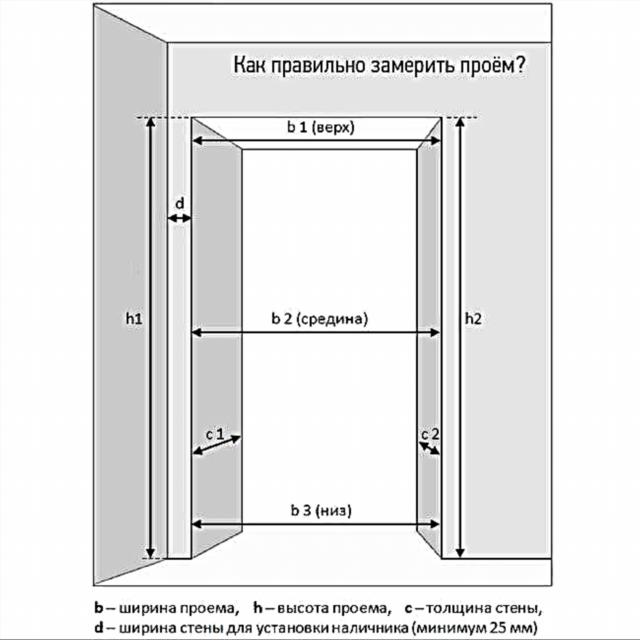
- The depth of the opening is equal to the width of the wall. Therefore, the width of each wall is measured: on both sides of the opening and on top, or the thickness of the door frame is measured, the wall protruding beyond it is added to it, if any.
Size calculation
After taking measurements, you can correctly calculate the value of the door leaf.
This takes into account:
- The height of the door leaf and its width.
- Thickness and width of the door frame.
- The width of the platbands.
- If there is a threshold, its size.
For example, the calculation for the door leaf with dimensions is taken:
- Height - 2 meters.
- Width - 80 centimeters.
- The thickness of the box for the door is 25 millimeters.
When calculating the dimensions, it is necessary to add to the width the thickness of the box on both sides. In addition, the calculation takes into account the mounting clearances on each side, approximately 15-20 millimeters.
In this case, the width will be equal to: 800 + 25 + 25 + 15 + 15 = 880 millimeters. An example for counting is presented in the photo.
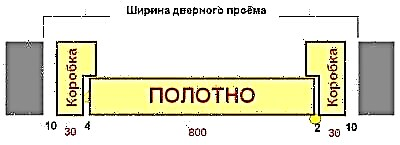
This width is almost ideal for manufacturers of interior doors. Doors are easily mounted in standard sizes of openings of premises.
The height is calculated in a similar way, taking into account the mounting clearances and the presence of a threshold. The height of the doorway will be: 2000 + 25 + 10 + 15 = 2050 millimeters.
As a result, for a door leaf with dimensions of 2 x 0.8 meters, an aperture in the wall is 2.05 x 0.88.
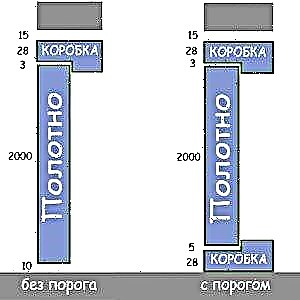
What is the thickness of the door frames? Usually the standard size is 75 millimeters. This must be taken into account when installing the door.
Otherwise, you will need to use the box expander or saw it along. In this case, problems may arise during the subsequent installation of platbands, which will lead to damage to the appearance of the door.

To determine the parameters of the wall, you need to measure its thickness in three places on all sides. If the parameters along the perimeter of the doorway are the same, an order is made for products with non-standard sizes. At different thicknesses at these points, the door frame is sawn or put on.

Watching the video in this article will allow you to correctly calculate the opening for installing the door leaf, taking into account the style, characteristics of materials, operating conditions.
Assignment of an additional element

The additional element is a bar that is used to expand the beam of the used box for the opening.

It is used to close a section of the wall that is not hidden by the box beam. The width of the required extension is calculated by measuring the thickness of the wall in the doorway, and the width of the box beam is subtracted from the obtained value.
The standard width of the door frame is 7 centimeters. With a larger wall thickness, installation of add-ons is required. An exception is the use of “G” shaped platbands.

Tip: When purchasing doors, you must consider the largest wall thickness at the opening. Otherwise, the box will be less than the width of the wall. In this case, the platband will not fit snugly on the wall and box.
If you get such a defect, you need to use alabaster or gypsum mortar to cover the cracks.
The width of the extension is acquired equal to or greater than the part of the wall to be closed. For example, with a wall width of 12 centimeters, and boxes of 8, an extension of at least 4 is required.
Features of the add
Before you mount the trims on the door frame, you should get acquainted with the advantages of their installation:
- High installation speed of an extension of the door unit.
- There are no “wet” finishing processes unfavorable for wood.
- A large period between regular repairs.
- Aesthetics, which ensures the integrity and beautiful appearance of the door structure.
- Low price for slats.

The three components of the extender-good, assembled into a single whole, resemble the letter P, you can attach it:
- Directly to the door frame.
- To the wall, at the installation site of the opening.
- On the mounting beam, placed between the extensions and the vertical planes of the opening.
If there is no special mechanical load on the extensions, only liquid nails can be used to fix into a specially made recess. But more often galvanized screws are used for installation.

Tip: If fixing is carried out on the front side, it is necessary to hide the fastener caps with mastics or plugs selected to match the box.
Types of extensions
For home improvement, you can purchase doors:
- With boxes in which the groove was previously selected on the outside for proper alignment with the extras.
For this, you can use wood-shaving or wooden planks, one centimeter thick. The width of the strip-panels is measured with a box mounted in the opening, which will be the basis of the structure. In this case, the element is nailed on the back side of the opening with galvanized small studs in increments of 20 to 35 centimeters. You can insert the strips into the recess, and then fix the adhesive in the box opening.
- No groove with box timber. In this case, you can:
- choose a groove with a machine with a special straight cutter yourself,
- attach the extensions to the box beam through previously drilled through with self-tapping screws from the end of the element,

Tip: For fastening additional strips to the box, the diameter of the through holes along the entire length is not the same. First, the drill is taken with a diameter equal to the head of the self-tapping screw, then according to the size of its trunk.
- additional elements are installed on the bars screwed with screws to the wall. The first one is located 200 millimeters from the floor, and then in increments of 60 centimeters,
- dobory with a box "sit" inside the base of plywood or drywall,
- a box bar without a groove is connected to the slats by installing a rail, which runs from the outside of the opening along the alignment line,
- The rail or plank of plywood is attached around the perimeter not in a continuous strip, but in separate segments.
A timber and extension strips are nailed to the rail. In this case, the central axis of the rail and the connection line should coincide or have a slight displacement.
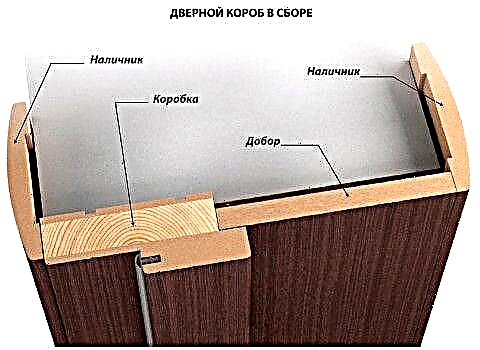
After assembly, the end line of the extensions is flush with the opening. Excesses up to one millimeter are shrunken with a plane, and then everything is closed by cashing.
Installation of add-ons
Usually the upper bar, combined with the lintel, is superimposed on two vertical parts.

To calculate its length, two thicknesses of additional posts must be added to the size of the lintel. But you can set the bar between them. In this case, the length of the lintel extension is selected according to the width of the box, and the thickness of the upper bar is added to the heights of the left and right vertical elements.

- With meticulous accuracy, measurements are made according to the scheme, which corresponds to the chosen method of fastening.
Tip: For the right and left extension, the vertical size is measured separately.In this case, the inner line of the future plank should be measured on the box, and the outer one in the opening in fact.
- The board is cut according to measurements and according to the construction scheme.
- All three additional elements are attached to the assembled door frame.
- When attaching the strips to a box not installed in the opening, it is installed with them.
- Mounting wedges are located between the wall and the door base and they align the device in the opening.
- Foam mounting gap is blown with foam before installing spacer wedges, between the box beam and the extras.
- Foaming of the entire space is performed in batches, at least in two steps. Hardening adjustment is monitored while the foam cures.
- The work is being completed by sealing the gap formed between the wooden parts and the floor, and installing the platbands.
Properly completed expansion of the door frame allows you to design any opening quickly and efficiently. This is especially important when it is difficult to choose a standard finished design.


